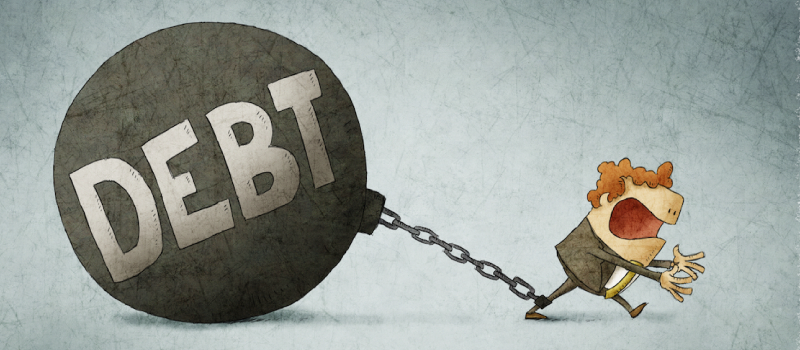Is a Broken Arm a Catastrophic Injury? Causes, Complications & Legal Advice
Is a Broken Arm a Catastrophic Injury?
Catastrophic injuries are life-altering events that result in significant and often permanent damage, affecting a person’s ability to work, perform daily tasks, or maintain their quality of life. While commonly associated with traumatic brain injuries, spinal cord damage, or amputations, other injuries, like a broken arm, may sometimes reach this threshold depending on the severity and long-term implications.
This guide explores whether a fractured arm can be considered a catastrophic injury, focusing on complications, recovery challenges, and the broader impact on an individual’s life. Understanding this distinction is essential for both medical and legal perspectives.
What Is a Catastrophic Injury?
A catastrophic injury is a severe trauma that results in long-term or permanent disability, significantly impairing an individual’s quality of life and ability to perform daily activities. Such injuries often involve critical areas like the spine, spinal cord, or brain, leading to profound physical and emotional challenges.
Is a Broken Arm a Catastrophic Injury?
A broken arm, medically termed an arm fracture, involves a crack or break in one or more of the arm’s bones—the humerus, radius, or ulna. Such injuries commonly result from falls, accidents, or sports-related incidents.
While a broken arm is not typically classified as a catastrophic injury, it can reach this threshold in severe cases.
Overview of Broken Arm Injuries
A broken arm, or arm fracture, involves a break in one or more of the three bones comprising the arm: the humerus (upper arm), radius, and ulna (forearm). These bones facilitate various movements and functions, making them susceptible to fractures.
Common Causes of Arm Fractures:
- Falls: Landing on an outstretched hand or elbow during a fall is a frequent cause of arm fractures.
- Sports Injuries: Contact sports or activities with a high risk of falls, such as football or gymnastics, often lead to fractures due to direct blows or awkward landings.
- Trauma: Incidents like motor vehicle accidents can exert significant force on the arm bones, resulting in fractures.
Typical Symptoms:
- Pain: Immediate and severe pain at the injury site.
- Swelling and Bruising: There is noticeable swelling and discoloration around the affected area.
- Deformity: The arm may appear misshapen or out of alignment.
- Limited Mobility: Difficulty or inability to move the arm without pain.
Standard Treatment Options:
- Immobilization: Using a cast or splint to align the bone fragments properly during healing.
- Medication: Administering pain relievers to manage discomfort.
- Surgery: In cases of severe fractures, surgical intervention may be necessary to realign and stabilize the bones using plates, screws, or rods.
- Rehabilitation: Doing physical therapy exercises post-healing to restore strength and range of motion.
Prompt medical attention is crucial for proper diagnosis and treatment to ensure optimal recovery and minimize potential complications.
When Can a Broken Arm Be Considered Catastrophic?
While many broken arms heal without significant issues, certain severe fractures can be considered catastrophic due to their profound and lasting impact on an individual’s life. Here are specific circumstances where a broken arm may be deemed catastrophic:
- Compound Fractures:
Also known as open fractures, these occur when the broken bone pierces the skin, creating an open wound. This exposure significantly increases the risk of infection, including osteomyelitis (bone infection), which can complicate healing and lead to prolonged medical treatment. Additionally, the severity of the injury may necessitate multiple surgeries and extended rehabilitation, potentially resulting in long-term functional impairment.
- Nerve or Vascular Damage:
Fractures that involve injury to nearby nerves or blood vessels can lead to serious complications. Nerve damage may result in loss of sensation, muscle weakness, or paralysis in the affected limb, while vascular injury can compromise blood flow, increasing the risk of tissue death. These complications often require immediate surgical intervention and can lead to permanent disabilities, affecting an individual’s ability to perform daily activities or return to work.
- Multiple Fractures:
When multiple bones in the arm are fractured, or a single bone is broken in multiple places (comminuted fracture), the injury becomes more complex. Such cases often require surgical fixation with plates, screws, or rods to stabilize the bones. The complexity of the injury can lead to extended rehabilitation periods and increased risk of complications like non-union (failure of the bone to heal). It may result in long-term functional limitations or chronic pain.
- Non-Union or Malunion:
Non-union occurs when a fractured bone fails to heal, while malunion refers to a bone that heals incorrectly. Both conditions can cause significant functional impairment, chronic pain, and deformity. Treatment often involves additional surgeries, such as bone grafting or corrective osteotomy, and prolonged rehabilitation. These complications can severely impact an individual’s quality of life and ability to perform daily tasks, potentially classifying the injury as catastrophic.
In these scenarios, a broken arm extends beyond a simple fracture, leading to substantial and enduring consequences that may classify it as a catastrophic injury.
How to Seek Help After a Severe Injury?
Experiencing a severe arm injury requires prompt medical and legal attention to ensure proper healing and to protect your rights.
Medical Attention
Immediate medical care is crucial for any fracture. Delaying treatment can lead to complications such as improper healing, increased pain, and long-term disability. Healthcare professionals will assess the fracture’s severity through physical examinations and imaging studies like X-rays or CT scans.
For severe fractures, especially those involving multiple breaks or open wounds, advanced treatments may be necessary. Surgical interventions, such as open reduction and internal fixation, involve realigning the bone fragments and securing them with hardware like plates and screws.
Post-surgery, physical therapy is vital in restoring the injured arm’s strength, flexibility, and function. A tailored rehabilitation program can significantly enhance recovery outcomes.
Legal Support
Consulting a catastrophic injury lawyer is essential if your injury resulted from someone else’s negligence. An experienced attorney can help determine liability, navigate complex legal procedures, and advocate for your rights.
They can assist in gathering evidence, negotiating with insurance companies, and representing you in court if necessary. Compensation for catastrophic injuries may cover medical expenses, lost wages, pain and suffering, and rehabilitation costs. Securing legal representation increases the likelihood of receiving fair compensation to support your recovery and financial stability.
Addressing medical and legal aspects promptly after a severe arm injury ensures comprehensive care and protection of your interests.
Implications of Classifying a Broken Arm as Catastrophic
Classifying a broken arm as a catastrophic injury can have significant implications, offering both potential benefits and challenges.
Potential Benefits:
- Access to Specialized Medical Care: Recognizing a broken arm as catastrophic may qualify you for advanced treatments, including specialized surgeries and comprehensive rehabilitation programs aimed at achieving optimal recovery.
- Compensation Opportunities: This classification can make you eligible for various forms of compensation, such as workers’ compensation benefits, which may cover medical expenses, lost wages, and disability benefits. For instance, workers’ compensation often provides scheduled loss awards for specific injuries, including arm fractures.
Possible Challenges:
- Legal Hurdles: Establishing a broken arm as a catastrophic injury requires navigating complex legal criteria, which can vary by jurisdiction. This process may involve detailed assessments and adherence to specific legal standards.
- Comprehensive Medical Documentation: To support your claim, you must provide thorough medical records detailing the injury’s severity, treatment plans, and long-term prognosis. Accurate and complete documentation is crucial for substantiating the catastrophic nature of the injury.
Conclusion
While a broken arm is not typically classified as a catastrophic injury, certain severe cases involving complications like nerve damage, multiple fractures, or non-union can profoundly impact an individual’s quality of life and ability to function. Understanding when a broken arm crosses this threshold is essential for obtaining appropriate medical care and legal support. Prompt treatment and a comprehensive recovery plan are critical to minimizing long-term effects. If negligence played a role in the injury, consulting with a qualified attorney can help secure the compensation needed to navigate recovery and rebuild your life effectively.
Attorney Advertising: The information contained on this page does not create an attorney-client relationship nor should any information be considered legal advice as it is intended to provide general information only. Prior case results do not guarantee a similar outcome.










